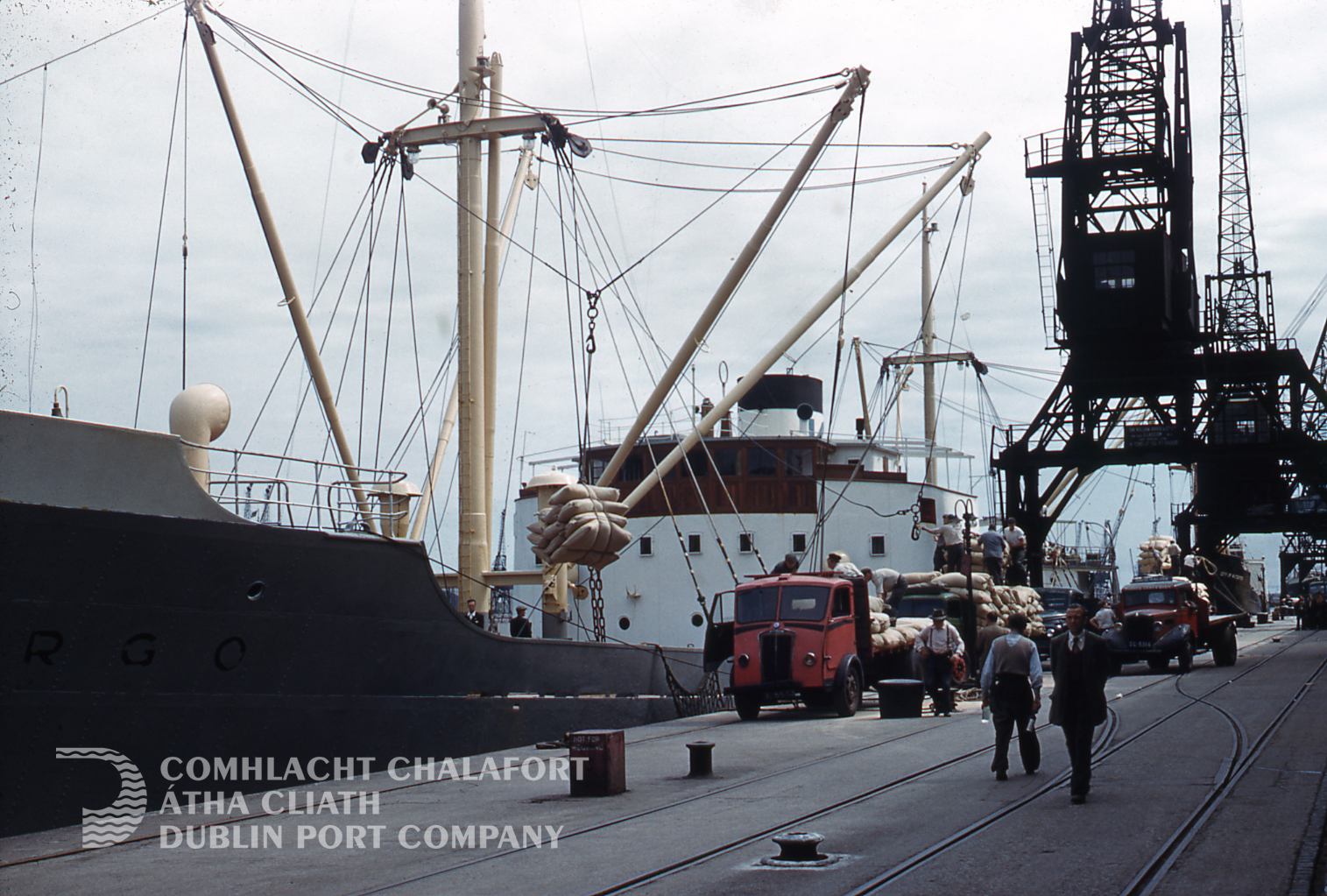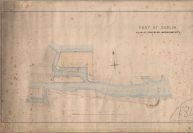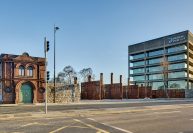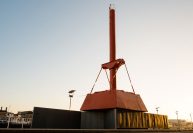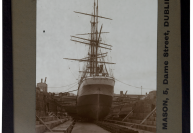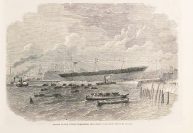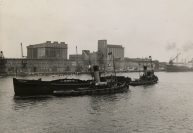Sitting on the Dock of Dublin Bay
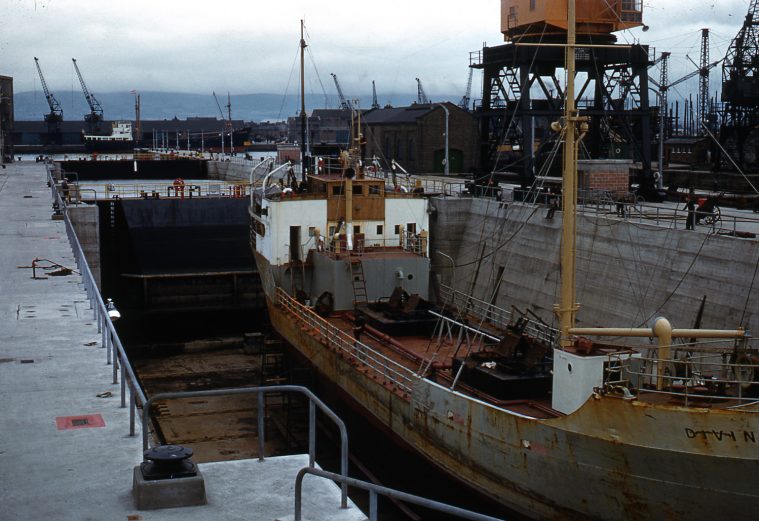
Dublin Port Company’s Graving Dock project will create a new public realm, a future part of a distributed port museum and a location for the arts within the Port. James Kelleher, Head of Special Projects, and Lar Joye, Heritage Director, explain why the project has become a labour of love.
Dublin Port Company has unveiled an ambitious plan to see the area around its two graving docks, including the Victorian-era Pumphouse, reborn as a public space.
A graving dock or dry dock is an enclosed basin, into which a ship was taken for cleaning or repair, with graduated sides almost like a Roman amphitheatre. Dublin Port has two of these graving docks, Graving Dock One dating from the Victorian era and its beautiful Pumphouse, as well as Graving Dock Two, a more modern affair which was unveiled in the 1950s. When it was constructed, Graving Dock Two was “possibly the biggest infrastructural project in the country at the time,” according to James Kelleher, Head of Special Projects, Dublin Port Company, and its official opening was attended by luminaries like Irish President Sean T. O’Kelly and Archbishop Charles McQuaid. It was the largest working dry dock in the country and the last one to officially close, after repairs to the Jeanie Johnston were carried out in 2017.
The Graving Dock project comes under the umbrella of the Alexandra Basin Redevelopment (ABR) Project, the first major capital investment project from Dublin Port Company’s Masterplan 2040, which began back in 2015.
“The ABR Project will be coming to an end in 2022 with the opening of Terminal Four and the Graving Dock Project is meeting the commitment that we made back in 2015 to An Bord Pleanála,” explains Lar Joye, Heritage Director, Dublin Port Company. “In fact, what was initially proposed in 2015 was a lot smaller than what is happening now. Our commitment to this project and to the arts in general has got stronger and stronger over the years, and that is reflected in the size and scope of this project.”
“The original plan involved enclosing a small area within a massive operational yard around Pumphouse Number One”, reveals James, “but we felt that we should be allowing the public access to a more meaningful example of not only 19th century port heritage but also late 20th century heritage as well, in the shape of Pumphouse Number Two. Essentially, this area is the conjunction between the 19th and 20th centuries, while the space in between the two Graving Docks allows the flexibility to do other things into the future.”
The work will take place in a series of phases, with Phase One involving the in-filling of Graving Dock Two, creating a large public plaza between the two pumphouses, which will house one of the old cranes that spent its entire working life at the graving dock. Stage two will involve opening up Pumphouse Two as part of the Port’s distributed museum. Phase three will see the unearthing and restoration of Graving Dock One, and the final phase will see architectural intervention to that graving dock as always envisaged under the ABR.
Recognising the potential of the site
James and Lar recognised the potential in the site, sketched out how they saw it being configured and brought it to Dublin Port Company CEO Eamonn O’Reilly, whose support gave them the confidence to have the design developed architecturally in a short period to a stage where it could be tendered and then take the project to the Board.
The project received Board approval in July 2020, and work began on the site the following month. The impact of the Covid-19 pandemic has delayed things, as the various lockdowns meant that construction work had to be paused. “We had an original completion date of February but due to the Covid restrictions, that is now more likely to be May,” James reveals.
Darmody Architects were chosen for the project, working with the existing engineering consultants DBFL and coordinated by Oliver Lynch, the project manager from Dublin Port Company’s PMO office, in a very collaborative manner. “The firm have a lot of experience of working for me, having been the main architects on the opening up of Port Centre,” reveals James. “They are eminently familiar with what we are trying to achieve in terms of integrating the Port with the City.”
Re-opening the Pumphouse
One of the buildings on-site, the Victorian Pumphouse Number One, has already been utilised, housing the Pumphouse Presents theatre festival, where five plays were filmed inside its atmospheric walls.
“It is a fantastic space,” agrees James. “We are reinforcing with our wider design team the concept of a minimalist intervention in this historic building. The character, the earthy grittiness of it is what makes it special, an intangible quality. We always felt that there was great potential there and the theatre companies spotted that immediately and showcased it for the Pumphouse Presents series.”
Pumphouse Number One was originally earmarked for a special play, written and performed by ANU Productions, in 2020, called The Book of Names, based on a book in the Dublin Port Archive which lists all the staff in the Port, and looking at the history from a century ago, particularly the War of Independence and the Civil War. While that project didn’t go ahead due to the pandemic, the theatre group will work with Dublin Port Company on a very special production for its official re-opening.
“ANU Productions will be the first theatre group to use the site when it opens,” Lar states. “The idea is that we will still hand-over the site to them, and that ANU will spend a couple of months on the site to really see what space they have to work with and will come up with a new a site-specific play. It will be quite a big production, where there will be two shows a night. After that, we will book a programme of events for the space.”
Capacity for the Pumphouse space has not been finally established as yet, but initial studies suggests that the space could comfortably hold 177 people in socially-distanced pods, with the post-Covid capacity being a multiple of that figure. As mentioned elsewhere in our report on the Pumphouse Presents festival, theatre companies are absolutely enthralled with the opportunities presented by the new performing space, and it should prove a real draw for the entire arts community, as Lar explains: “I think all kinds of artists will want to use the space.”
The importance of built heritage
James describes Pumphouse Number Two as “a different animal entirely”. Built in the 1950s, it is “like walking into the set of a James Bond movie from that era”, he smiles. “We want to bring that pumphouse into the whole idea of the distributed museum at some point in the future. It won’t be delivered under these works, but we are looking to create a lobby which would allow people to view into Pumphouse Number Two. But there is much more to that building, a whole subterranean element; what you see above ground is just the tip of the iceberg. It is a unique building and in time, we would like to be able to bring people into it and tell the story of how the Graving Dock worked, its relevance to the Port at that time and how ports changed since that time and are still evolving.
“What is becoming more and more apparent is the importance of late 20th Century industrial built heritage, and we are lucky to have some fine examples of this
in Dublin Port. To our kids, this is like ancient history,” James grins, “but the importance of our industrial heritage and our built heritage from the 1950s onwards is growing.”
Help us with the Archive
You can help us to preserve Dublin Port’s rich archival heritage by
donating items or seek advice from us on items in your safekeeping.
Get in touch by completing the contact form below.
We’d love to hear from you!
